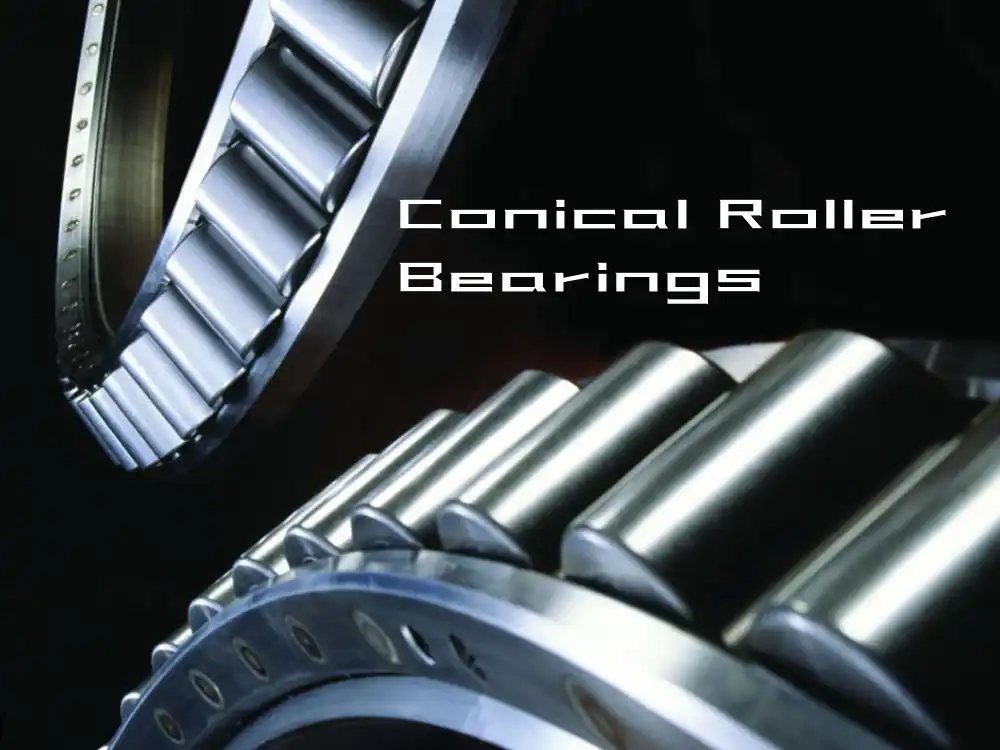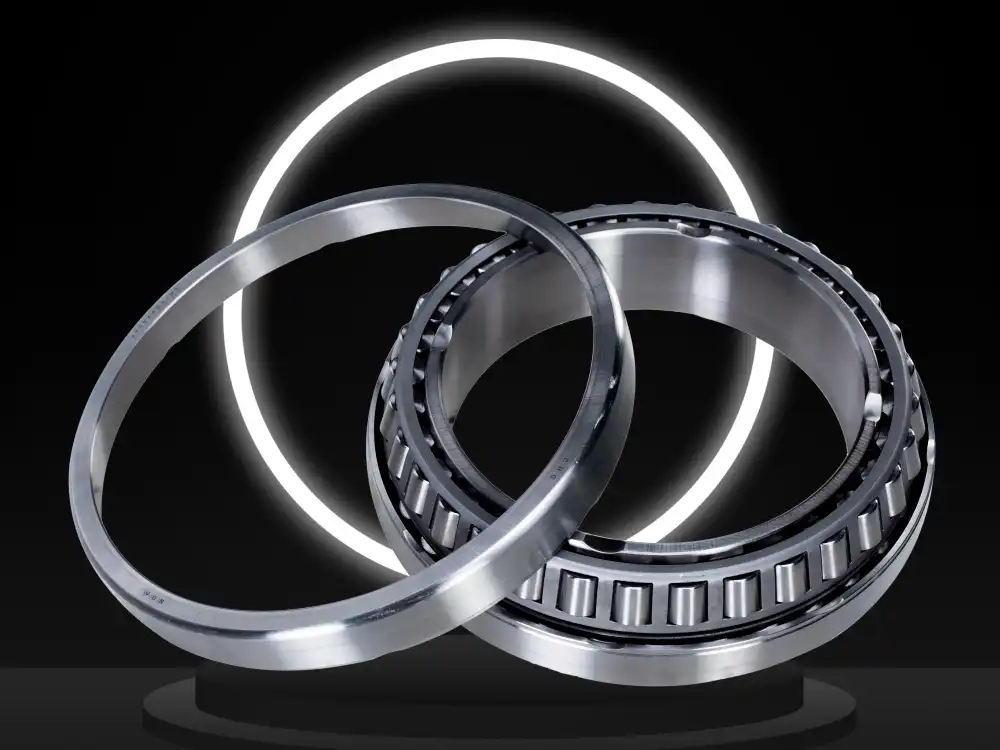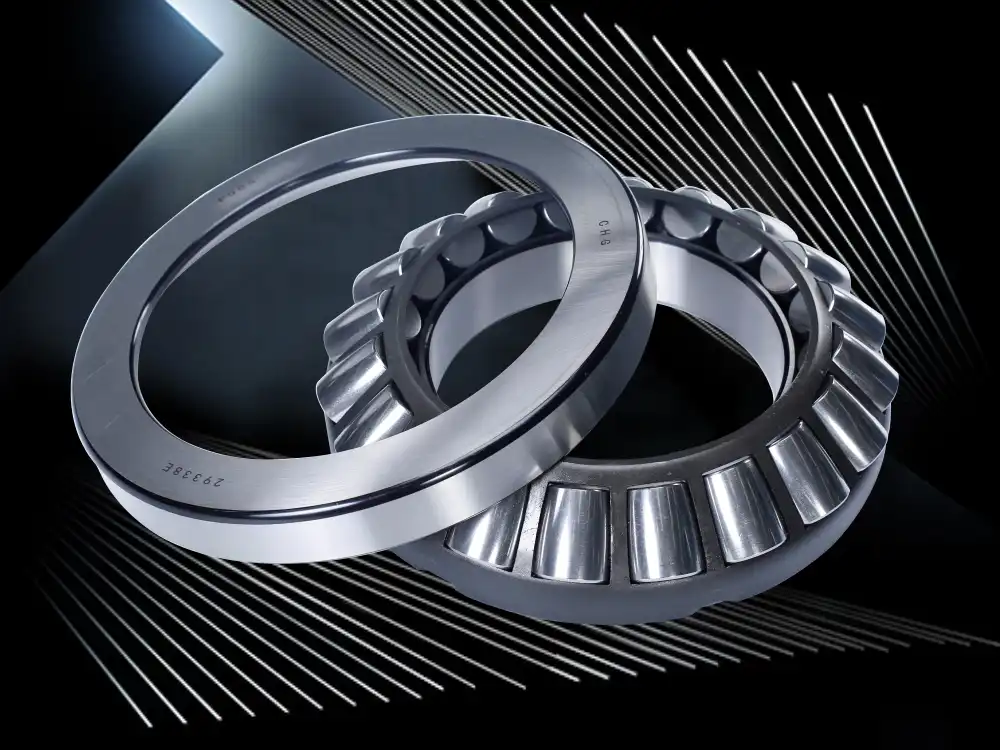What are the Sizes and Specifications of Conical Roller Bearings?
Conical roller bearings, also known as tapered roller bearings, are essential components in various mechanical systems that require both radial and axial load support. These specialized bearings consist of tapered inner and outer races with tapered rollers arranged between them. This unique design allows them to handle combined loads efficiently while maintaining precise rotation even under challenging operating conditions.

What are the standard dimensions of conical roller bearings?
Common Size Ranges for Industrial Applications
Conical roller bearings come in an extensive range of dimensions to accommodate various industrial needs. Standard bore diameters range from 10mm to over 1,600mm, outer diameters from approximately 30mm to 2,000mm, and widths generally between 10mm and 400mm. These standardized dimensions make it easier for engineers to select appropriate bearings without requiring custom solutions. The ratio between these dimensions varies significantly based on the bearing series and intended application, with some designs prioritizing compact arrangements while others focus on maximum load capacity.
How Size Designations Are Interpreted
The size designation system for Conical Roller Bearings follows industry-standard conventions. Typically, these designations include a series code followed by numeric values indicating the bore diameter and other dimensions. For instance, in the designation "32215," the first two digits (32) represent the bearing series, indicating the general configuration and contact angle, while the last three digits (215) relate to the bore diameter. For metric bearings, the last two digits multiplied by 5 give the bore diameter in millimeters (15 × 5 = 75mm). This standardized approach allows quick identification of compatible bearings across different manufacturers.
Size Considerations for Different Applications
When selecting Conical Roller Bearings, size considerations extend beyond basic dimensions. Automotive applications typically require compact designs with optimized load capacity, while heavy industrial machinery needs larger bearings with enhanced load ratings. The selection process must account for anticipated loads, operating speeds, space constraints, and service conditions. Engineers must evaluate whether single-row, double-row, or four-row arrangements would be most appropriate based on load directions and magnitudes. Additionally, considerations regarding lubrication access and heat dissipation become increasingly important as bearing sizes increase.
How do conical roller bearings differ from other bearing types?

Unique Structural Features of Conical Roller Bearings
Conical Roller Bearings feature tapered geometry of both rollers and raceways, creating conical running surfaces that converge at a common point along the bearing axis. This design enables handling of combined loads—supporting both radial and axial forces simultaneously. The rollers are guided by the larger diameter end of the inner ring (cone), which features a raised flange ensuring proper alignment. These bearings typically incorporate separators (cages) that maintain proper spacing between rollers. Unlike ball bearings with point contact or cylindrical roller bearings with line contact, Conical Roller Bearings establish area contact between rollers and raceways, increasing load capacity while maintaining relatively low friction.
Performance Advantages Compared to Other Bearing Types
Conical Roller Bearings offer superior combined load handling capability—supporting significant radial and axial loads in one direction. When properly adjusted, they provide exceptional running accuracy and stiffness, crucial for precision machinery. Their tapered design allows for preload adjustment, enabling engineers to minimize clearance or create controlled preload to enhance system rigidity. These bearings demonstrate excellent durability under shock and impact loads, as the larger contact area distributes forces more effectively. They also exhibit good tolerance to slight misalignment compared to cylindrical roller bearings. The separable design—with the inner ring (cone) assembly distinct from the outer ring (cup)—simplifies installation and maintenance in many applications.
Application-Specific Considerations for Bearing Selection
While Conical Roller Bearings excel in many scenarios, they may not always be optimal. Applications requiring extremely high rotational speeds might benefit from angular contact ball bearings due to the sliding contact at roller ends generating additional heat in conical bearings. Applications with significant bidirectional axial loads typically require paired arrangements or alternative bearing types. Conical Roller Bearings usually require clearance adjustment during installation, which may complicate maintenance compared to pre-adjusted bearings. Industries such as automotive, mining, and heavy manufacturing frequently prefer these bearings for their robustness and load capacity. When selecting between conical roller bearings and alternatives, engineers must evaluate operating temperatures, contamination risks, lubrication requirements, and expected service intervals.
What factors influence the lifespan and performance of conical roller bearings?
Critical Operating Parameters and Their Effects
Several critical parameters influence the performance and longevity of Conical Roller Bearings. Load conditions are paramount—exceeding rated capacity can dramatically reduce service life through accelerated fatigue. Operating speed affects roller-to-raceway contact and lubrication effectiveness, potentially limiting the bearing's practical speed range. Temperature conditions impact lubricant properties and bearing clearance through thermal expansion, with optimal performance typically between -30°C and 120°C for standard designs. The operating environment—including exposure to contaminants, moisture, or corrosive elements—can rapidly deteriorate bearing surfaces. Furthermore, installation quality dramatically impacts performance; improper mounting or misalignment can create uneven load distribution leading to premature wear.
Maintenance Practices for Extended Service Life
Effective maintenance can substantially extend Conical Roller Bearing service life. Regular lubrication is fundamental, with proper lubricant selection based on operating conditions. Monitoring programs tracking vibration signatures, temperatures, and lubricant condition provide early warning of developing issues. Periodic inspection of seals helps prevent contamination, while proper cleaning during maintenance prevents introduction of abrasive particles. Adjustment of bearing clearance or preload ensures optimal load distribution. In applications with frequent starts and stops or varying loads, more frequent maintenance may be necessary. Proper handling during installation and removal prevents damage to critical surfaces. Well-maintained bearings can achieve several times the calculated life expectancy in favorable conditions.

Material and Manufacturing Quality Considerations
Material composition and manufacturing quality significantly impact performance and durability. Premium Conical Roller Bearings utilize high-grade bearing steels like AISI 52100 with precise heat treatment protocols. For specialty applications, materials such as stainless steel, ceramic components, or specially coated elements may address specific environmental challenges. Manufacturing precision directly correlates with performance potential—higher precision grades offer superior running accuracy and reduced vibration levels. Surface finishing operations, including superfinishing processes, can dramatically reduce friction and extend fatigue life. The cage design and material selection also influence performance, with engineered polymer cages offering advantages in certain applications. Premium bearings manufactured with superior materials and tighter tolerances typically offer advantages in reduced maintenance requirements and extended service intervals despite higher initial costs.
Conclusion
Conical roller bearings represent a versatile and robust solution for applications requiring combined load support. Their tapered design, standardized dimensions, and adjustable clearance make them ideal for various industrial uses, from automotive to heavy machinery. Understanding their unique features, proper maintenance requirements, and material considerations is essential for maximizing their operational lifespan and performance. By selecting the appropriate specifications and implementing recommended maintenance practices, engineers can ensure these bearings deliver reliable service even under demanding conditions.
Luoyang Huigong Bearing Technology Co., Ltd. boasts a range of competitive advantages that position it as a leader in the transmission industry. Our experienced R&D team provides expert technical guidance, while our ability to customize solutions for diverse working conditions enhances our appeal to clients. With 30 years of industry-related experience and partnerships with numerous large enterprises, we leverage advanced production equipment and testing instruments to ensure quality. Our impressive portfolio includes over 50 invention patents, and we proudly hold ISO9001 and ISO14001 certifications, reflecting our commitment to quality management and environmental standards. Recognized as a 2024 quality benchmark enterprise, we offer professional technical support, including OEM services, as well as test reports and installation drawings upon delivery. Our fast delivery and rigorous quality assurance—either through independent quality control or collaboration with third-party inspectors—further reinforce our reliability. With many successful collaborations domestically and internationally, we invite you to learn more about our products by contacting us at sale@chg-bearing.com or calling our hotline at +86-0379-65793878.
References
1. Harris, T. A., & Kotzalas, M. N. (2023). Essential Concepts of Bearing Technology. CRC Press, New York.
2. SKF Group. (2024). Rolling Bearings Handbook: Principles, Designs, and Applications. SKF Publications, Sweden.
3. Eschmann, P., Hasbargen, L., & Weigand, K. (2022). Ball and Roller Bearings: Theory, Design, and Application. John Wiley & Sons, London.
4. Timken Company. (2023). Tapered Roller Bearing Catalog and Engineering Journal. Timken Publications, USA.
5. Liu, J., & Zhang, Y. (2024). "Advances in Conical Roller Bearing Manufacturing Technology." Journal of Tribology and Lubrication Engineering, 45(3), 214-230.
6. Chen, W., Yang, S., & Li, H. (2023). "Life Prediction Models for Tapered Roller Bearings Under Variable Load Conditions." International Journal of Mechanical Engineering, 18(2), 154-172.

